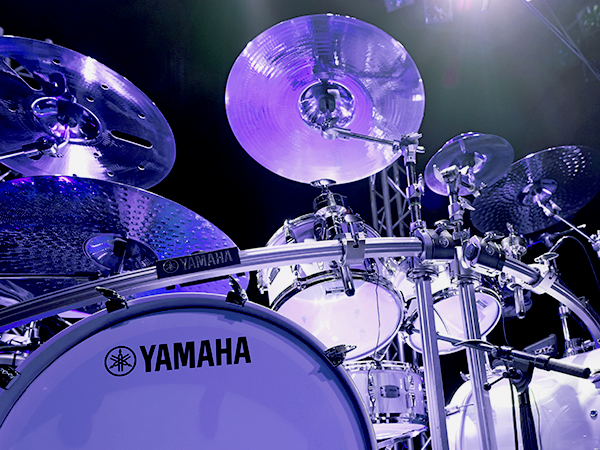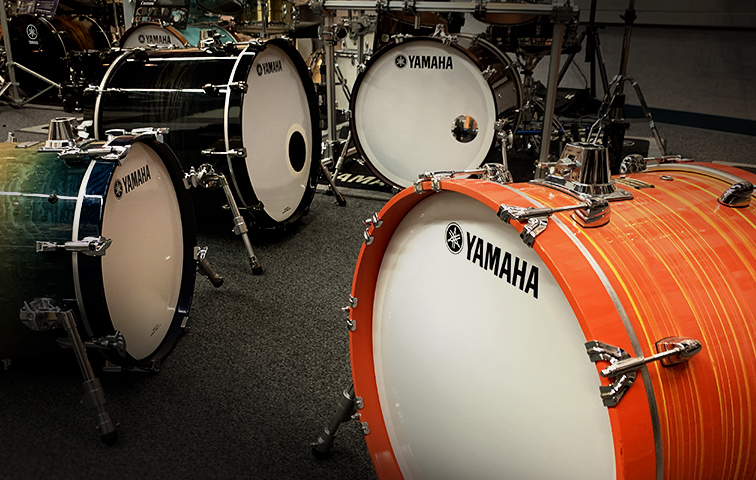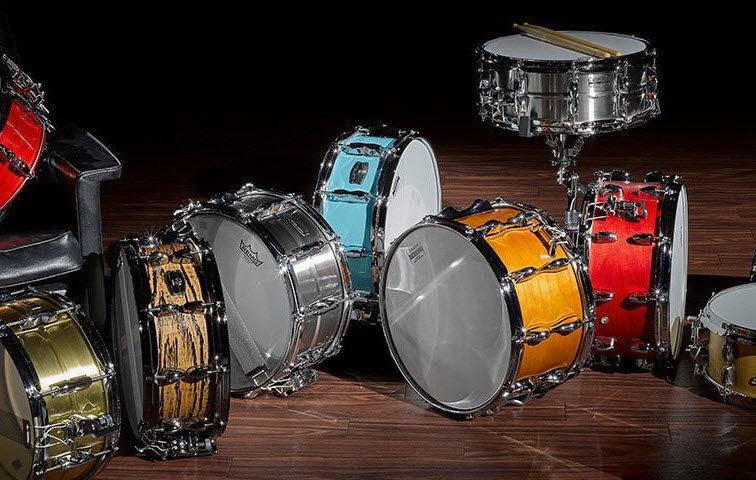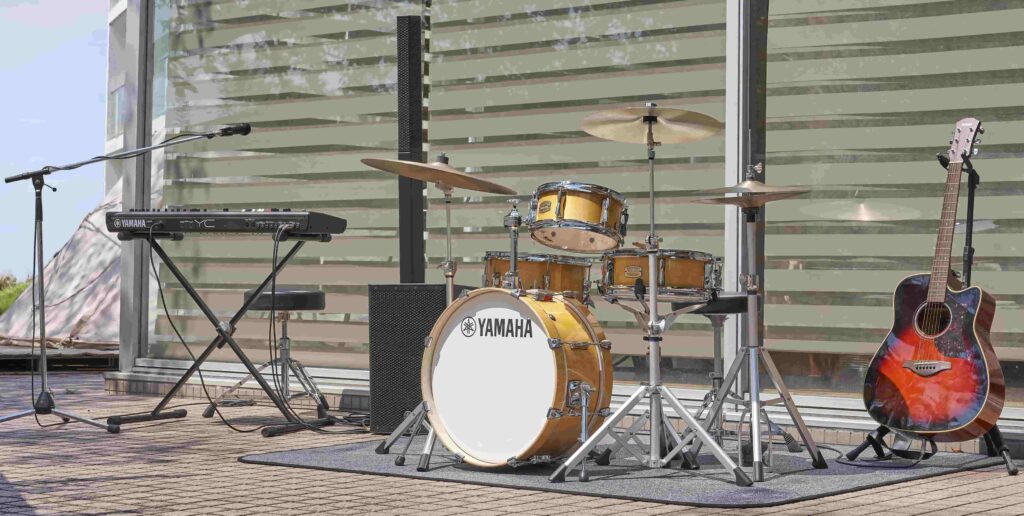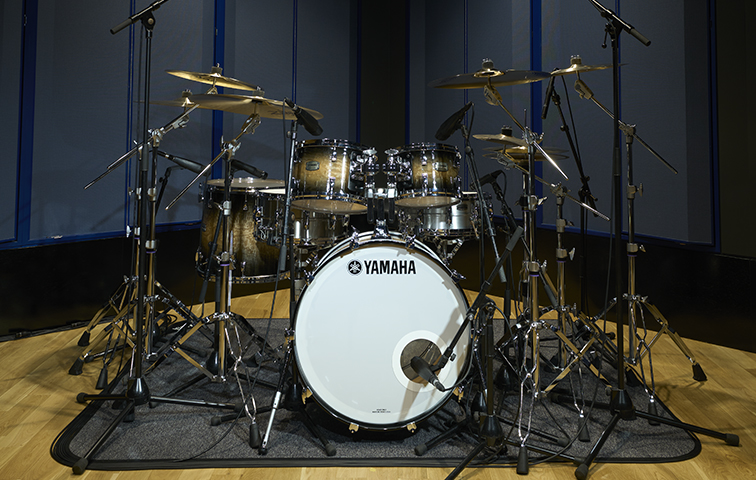The Modern Drum Set, Part 4: Foot Pedals
Giving the feet equal time.
In previous installments of this series of articles on the components of modern drum sets, we looked at snare drums, bass drums and toms. Now let’s focus on the bass drum pedal and hi-hat, both of which are essential parts of every drum set — and components that take a lot of abuse since they get stomped and kicked on a daily basis.
Don’t Tread on Me
The invention of the bass drum pedal in the early 1900s revolutionized drumming because it was the first time that one drummer could play the bass drum, snare drum and a cymbal at the same time. That solidified the idea of having just one drummer in a band — a trend that continues today.
Early bass drum pedals were crude contraptions by today’s standards, but over the years there have been many developments. For more information on the history of the bass drum pedal as well as the hi-hat, check out our blog post The Evolution of The Drum Pedal.

Direct vs. Chain Drive
The drive of a foot pedal is the mechanism connecting the footboard to the bass drum beater. Pedals using a metal strap for this connection are called direct drive, while those using a belt or strap are known as belt drive. Chain drive was developed in the late 1970s, borrowing the gears and chain from a bicycle. Yamaha bass drum pedals employ all three types of drives, and the company’s FP9 Series pedals can even be converted from chain drive to belt drive with the use of a standard drum key.
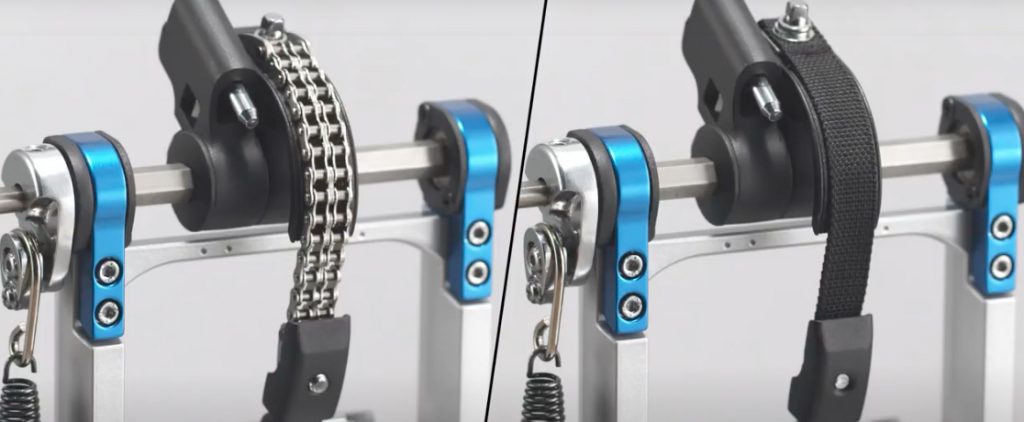
A direct drive link such as the one on the Yamaha FP-9500D ensures a solid connection that doesn’t flex and is consistent throughout the motion of the pedal. The link is typically made of metal, though some manufacturers offer models that use plastic instead. Direct drive “pushes” the footboard back on rebound, giving the pedal a fast response with increased power and control. For this reason, direct drive pedals are often preferred by drummers who play heel-down and want speed and precision in their playing technique.
The first belt drive foot pedals used leather belts, but modern versions like the Yamaha FP-8500B use woven nylon belts for long life. Belt drive reduces friction and delivers a quick, light feel. It does not require lubrication, and in some cases, may be more quiet than direct or chain drive.
Chain drive is very popular these days due to its responsive action. However, heavy playing can cause a single chain to flex from side to side, and that’s one of the reasons why the Yamaha FP-9C and FP-9500C employ dual chains. The first chain-drive pedals used a geared cam but the FP-9C, FP-9500C and FP-8500C offer a gearless cam, which makes the action quiet and requires less maintenance.
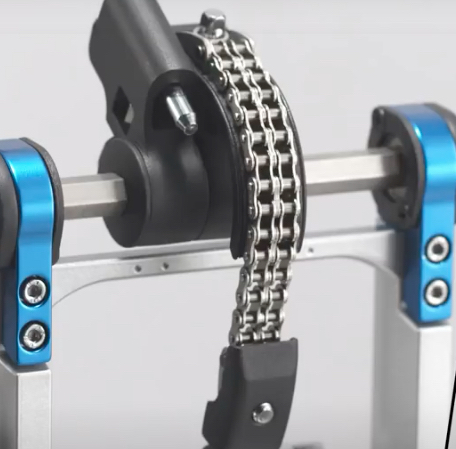
Happy Feet
Adjustability is crucial when it comes to bass drum pedals, and when choosing one, you’ll want to make sure you can dial it in for maximum comfort and performance.
Every modern foot pedal has adjustable spring tension, but not all of them are created equal. Look for spring tension that’s easy to adjust and lock from the playing position like the one on the Yamaha FP-8500B or the unique Easy-Access Auto-Lock Spring Adjustment (Patent Pending) used on FP9 Series pedals.

Adjustable Cam
The cam is a crucial part of the foot pedal because energy is transferred from the footboard through the drive to the cam, which in turn propels the beater into the head. Round cams produce consistent force and feel throughout the entire stroke, which gives some players more control over their dynamics. An offset (oval-shaped) cam gains tension and produces more force as the pedal moves downward, increasing speed and adding power to the stroke. Offset cams are popular with players who like to “push into” their bass drum. Adjustable cam positions that alter the initial tension of the stroke (such as those offered by the Yamaha FP-9C) are a highly desirable feature in bass drum pedals.
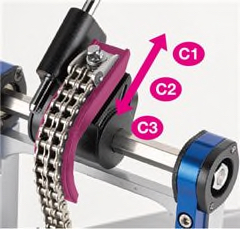
Beater and Footboard Angle
The size and type of material used in a beater head affects not only the sound of the bass drum but the feel of the pedal. In general, the larger and harder the surface of a beater, the greater the attack. Felt is the most commonly used material, providing ample definition and a nice thump without the “clickiness” that harder beaters impart. Some beaters, like the Yamaha BT950 and those on the company’s 9500 Series footpedals, offer reversible heads, with felt on one side and a hard plastic surface on the other side. Yamaha FP9 Series pedals, which come with BT9 felt beaters, even offer adjustable weights — something that affects both action and responsiveness.
The closer a beater is to the bass drum head, the faster it reaches the head, but the bad news is that volume and power are reduced. That’s why many drummers who play softly prefer to set the beater angle around 60 degrees from the head. Drummers who play harder may prefer an angle of 45 degrees for increased volume. All Yamaha bass drum pedals provide adjustable beater angle.
Many bass drum pedals — for example, Yamaha FP9, 9500 and 8500 Series models — also allow separate adjustment for the footboard angle. Drummers who play heel-up might want a higher angle for the footboard, while drummers who play heel-down often prefer a lower footboard angle for less fatigue.
Double or Nothing
Other features to look for in a bass drum pedal include a memory lock for the beater shaft and a hoop clamp that’s easy to reach from the playing position. There are also double-pedal versions, such as the Yamaha DFP-9500D. Since the secondary pedal is not attached to the bass drum, it’s important that the secondary pedal has spikes to keep it from slipping forward.
Hi-Hats
The hi-hat (a combination of two cymbals and a foot pedal, all mounted on a metal stand) appeared during the late 1920s, evolving from devices known as the “snowshoe” and “sock cymbal,” the latter looking very much like a hi-hat without an elevated cymbal seat. Because it was too close to the floor, the sock cymbal could not be played with drumsticks, but somewhere along the way, it was raised up to a height where it could be played with sticks, thus the name “hi-hat.” It is generally agreed that jazz drummer Papa Jo Jones (a mainstay of the Count Basie Orchestra for many years) pioneered playing timekeeping rhythms on the hi-hat.
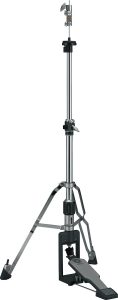
Hi-hat choices range from lightweight models such as the Yamaha HHS3 to the heavy-duty Yamaha HS-1200. Connection between the footboard and pull rod can be “direct pull,” as used on the Yamaha HS-850, or “chain pull,” which is utilized by the Yamaha HS-740A. Direct pull provides a strong, even feel all the way through the stroke, while chain pull creates a lighter action. Toggle link drive, featured on the Yamaha HS-1200T, is lighter at the top of the stroke and gradually becomes stronger as the footboard is depressed, resulting in a more expressive feel.
Features to look for when choosing a hi-hat include rotating legs for easy placement of multiple pedals (as found on the Yamaha HS-1200D), a cymbal seat with a locking angle adjustment, adjustable spring tension, variable footboard height and a locking clutch. Double-braced legs hold up to heavy playing, but single-braced legs leave more space for other pedals. Retractable spikes help prevent the hi-hat stand from creeping forward during playing.

Alternatives to traditional hi-hat stands include remote hi-hats that use cable drive, as well as closed hi-hat holders such as the Yamaha CHH-930, which fits any Yamaha tom holder or tom stand, thus allowing you to mount a pair of closed hi-hat cymbals anywhere in your drum set.
Foot pedals are key when it comes to comfort behind your kit, and they can open up a world of possibilities for your drumming. A little bit of experimentation and fine-tuning will ensure that your pedals provide plenty of kick!
Click here for Part 1: The snare drum.
Click here for Part 2: The bass drum.
Click here for Part 3: Toms.
Click here for Part 5: Cymbals and hardware.
Click here for more information about Yamaha acoustic drum sets.










